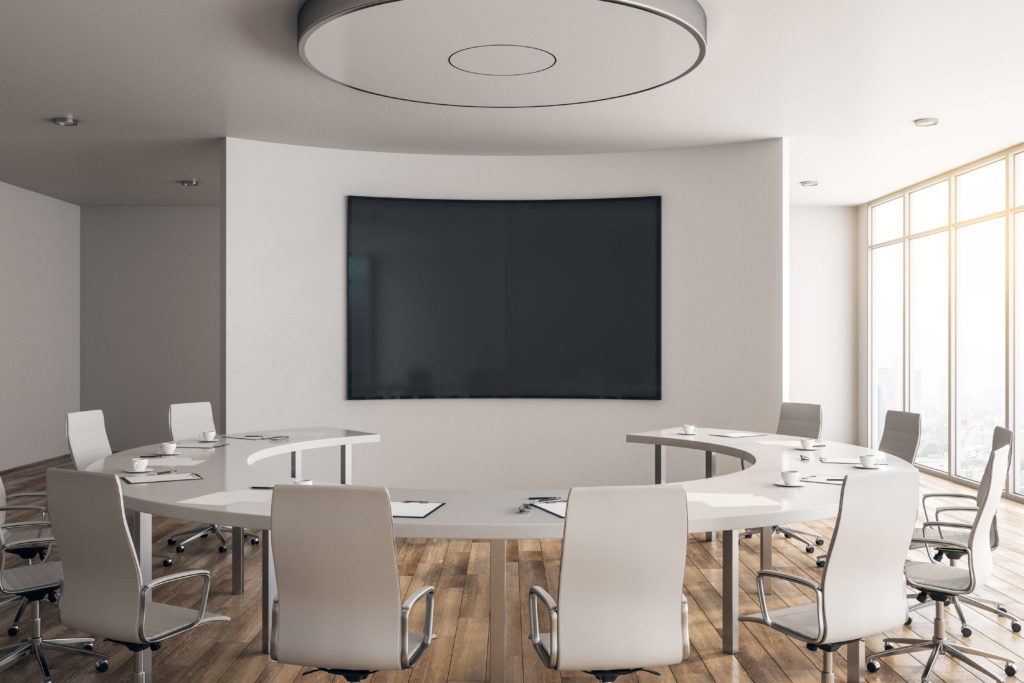
Does Anyone Really Use Interactive Whiteboards for Remote Meetings?
In what seemed like an overnight shift, our new normal became virtual meetings, webinars, online classes, and digital conferences. As we continue to navigate this new normal, the idea of working from home has become more prevalent. With a mass majority of companies and schools transitioning to a hybrid, if not, a completely remote environment, it goes without saying, remote and hybrid work is here to stay. So, the question we are now faced with is, “how do we ensure that our meetings don’t suck?”
As the numbers continue to increase with the idea of working from home, many are wondering if interactive whiteboards are useful for team collaborations. Roughly 1 million of the 32 million global corporate boardrooms are equipped with some form of interactive whiteboard. But do they really help? I have found that interactive whiteboards in most boardrooms collect dust or are being used as glorified TVs to project the typical PowerPoint presentation. Or they are used as ‘one-click to join meeting’ devices. Is there nothing better for these devices?
The Problems with Interactive Whiteboards
From a use case point of view, interactive whiteboards have been and are still being sold with the promise of complex collaborations where you can do all sorts of things. Manufacturers make promises about how dozens of people can connect and write at the same time and how we are all going to diagram everything in our next meeting. Fun fact, most people don’t do that! When was the last time you asked ten of your colleagues to collaborate with you on the same google doc simultaneously? The truth is this seldom happens.
The issue our industry faces is, team collaborations are oversold, and we target the wrong personas. Manufacturers routinely go after complex uses cases such as engineers, architects, and designers where they are all ‘designing’ together or ‘collaborating’ together.

Let’s be honest, a lot of companies don’t have many engineers, architects, and designers. In addition, these types of users have complex data sets, a variety of information systems, and different types of visualization tools. Their data and information might not translate easily to an interactive whiteboard.
That is to say; we focus primarily on the tip of the pyramid when our focus should be the base.
Interactive Whiteboards can Transform Everyday Remote Meetings
So, how do our everyday meetings look? It’s our zoom calls, team meetings, sales discovery calls, product proposal calls. In a nutshell, it’s all the virtual meetings we conduct on a day-to-day basis, with anyone who attends being our colleagues, customers, clients, students, or prospective buyers. How can we make everyday meetings impactful for anyone that attends?
With our screen-time drastically increasing due to the increase in virtual meetings, we are now faced with an increase in virtual fatigue, making it even harder to keep our audiences engaged and having an impact in our meetings.
Fret not; we are here to show you how you can make your remote meetings come alive by making your audience feel like they are in the same room with you! Bringing your virtual meetings to life is achievable by tweaking your setup/install and using your existing interactive panel and whiteboard technology.
Interactive whiteboard = Visual Aid
The success of your virtual meetings comes down to getting the best value out of your interactive whiteboards, which is achieved easily by using them as a visual aid, versus just another giant size TV screen, to make your meeting experiences more memorable. Pull up content, show diagrams, add annotations and digital ink and be visual. Suddenly, you’ve broken the curse of remote meetings that suck simply because your virtual meetings now have an interactive component to them. These engaging virtual meetings include and are not limited to being:
- Dynamic – being able to bring in additional content without sacrificing the quality of your presentation on a whim that will ignite a two-way dialogue between you and your audience
- Interactive – having the ability to present and also be able to take notes, create annotations and be visual without pulling your attention away from the screen or losing the interest of your audience
- Memorable – bringing up your camera and bring front and centre alongside your content while presenting without having to allow PowerPoint to take over
- Elevate Participants – Pin your video in the workspace and allow everyone to see you in a more natural manner. Add an audience monitor and easily see your participants.
Touchscreen and interactive whiteboards can indeed transform your remote meetings and also transform your passive video conference sessions into engaging, dynamic, and active sessions where remote attendees can participate and interact with each other. Resulting in a remote meeting that doesn’t suck while creating memorable meetings that have an impact.
Discover how touchscreens and interactive whiteboards can help you make an impact in your everyday meetings!